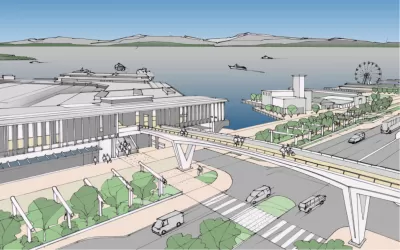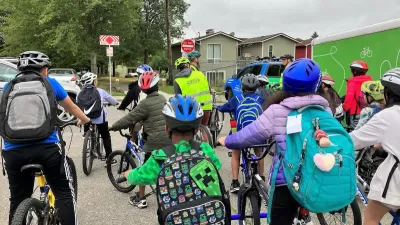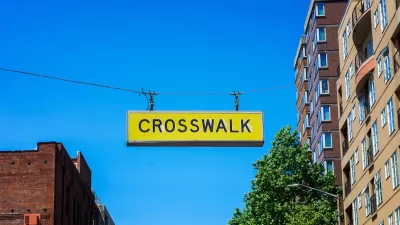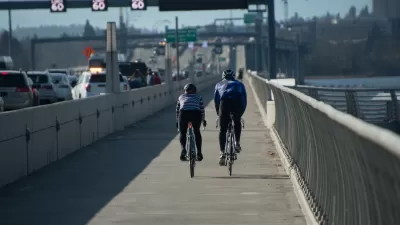The Marion Street and Union Street bridges showcase two vastly different designs for improving pedestrian access.

Ryan Packer reports on two pedestrian bridges that will improve pedestrian access to Seattle's waterfront. "The more significant of these new pedestrian bridges will be the new Marion Street bridge connecting to the new Washington State Ferries terminal at Colman Dock. Currently there is a temporary pedestrian bridge over Alaskan Way at Columbia Street for ferry passengers, which connects to a remaining segment of the old pedestrian bridge at Marion and Western Avenue." The city plans to completely replace and widen the bridge, "but that path to doing that remains opaque. The Seattle Design Commission, reviewing the project in early 2019, expressed concern about constructing the project in two phases, raising the possibility that the second phase would drop in priority once the first phase was completed." The bridge "is expected to start construction near the start of 2022 and open in early-to-mid 2023."
The second pedestrian bridge, writes Packer, is less a bridge than a pathway, "replacing the old and awkward stairway that was the only way to get between Alaskan Way and Western Avenue at Union Street. That connection wasn’t accessible, but the new Union Street bridge will include a new elevator, perhaps its biggest benefit."
And then there’s The Bench. At the spot where the pedestrian bridge path at the top of the bridge meets Western Avenue, there is to be installed an unusual "lean wall." Part hostile architecture, part bollard (preventing wayward drivers from turning from Western onto the walkway), part pedestrian diverter (forcing people walking to go to the crosswalks on either side), the bench is ultimately sidewalk level sculpture representing all of those things. Ultimately, this geometric form subbing in for a real bench should not exist, but soon it will.
Packer's article includes details about each project as well as renderings and diagrams showing the improved access.
FULL STORY: Two Very Different Pedestrian Bridges Coming to the Seattle Waterfront

Study: Maui’s Plan to Convert Vacation Rentals to Long-Term Housing Could Cause Nearly $1 Billion Economic Loss
The plan would reduce visitor accommodation by 25,% resulting in 1,900 jobs lost.

North Texas Transit Leaders Tout Benefits of TOD for Growing Region
At a summit focused on transit-oriented development, policymakers discussed how North Texas’ expanded light rail system can serve as a tool for economic growth.

Using Old Oil and Gas Wells for Green Energy Storage
Penn State researchers have found that repurposing abandoned oil and gas wells for geothermal-assisted compressed-air energy storage can boost efficiency, reduce environmental risks, and support clean energy and job transitions.

Santa Barbara Could Build Housing on County Land
County supervisors moved forward a proposal to build workforce housing on two county-owned parcels.

San Mateo Formally Opposes Freeway Project
The city council will send a letter to Caltrans urging the agency to reconsider a plan to expand the 101 through the city of San Mateo.

A Bronx Community Fights to Have its Voice Heard
After organizing and giving input for decades, the community around the Kingsbridge Armory might actually see it redeveloped — and they want to continue to have a say in how it goes.
Urban Design for Planners 1: Software Tools
This six-course series explores essential urban design concepts using open source software and equips planners with the tools they need to participate fully in the urban design process.
Planning for Universal Design
Learn the tools for implementing Universal Design in planning regulations.
Ascent Environmental
Borough of Carlisle
Institute for Housing and Urban Development Studies (IHS)
City of Grandview
Harvard GSD Executive Education
Toledo-Lucas County Plan Commissions
Salt Lake City
NYU Wagner Graduate School of Public Service





























